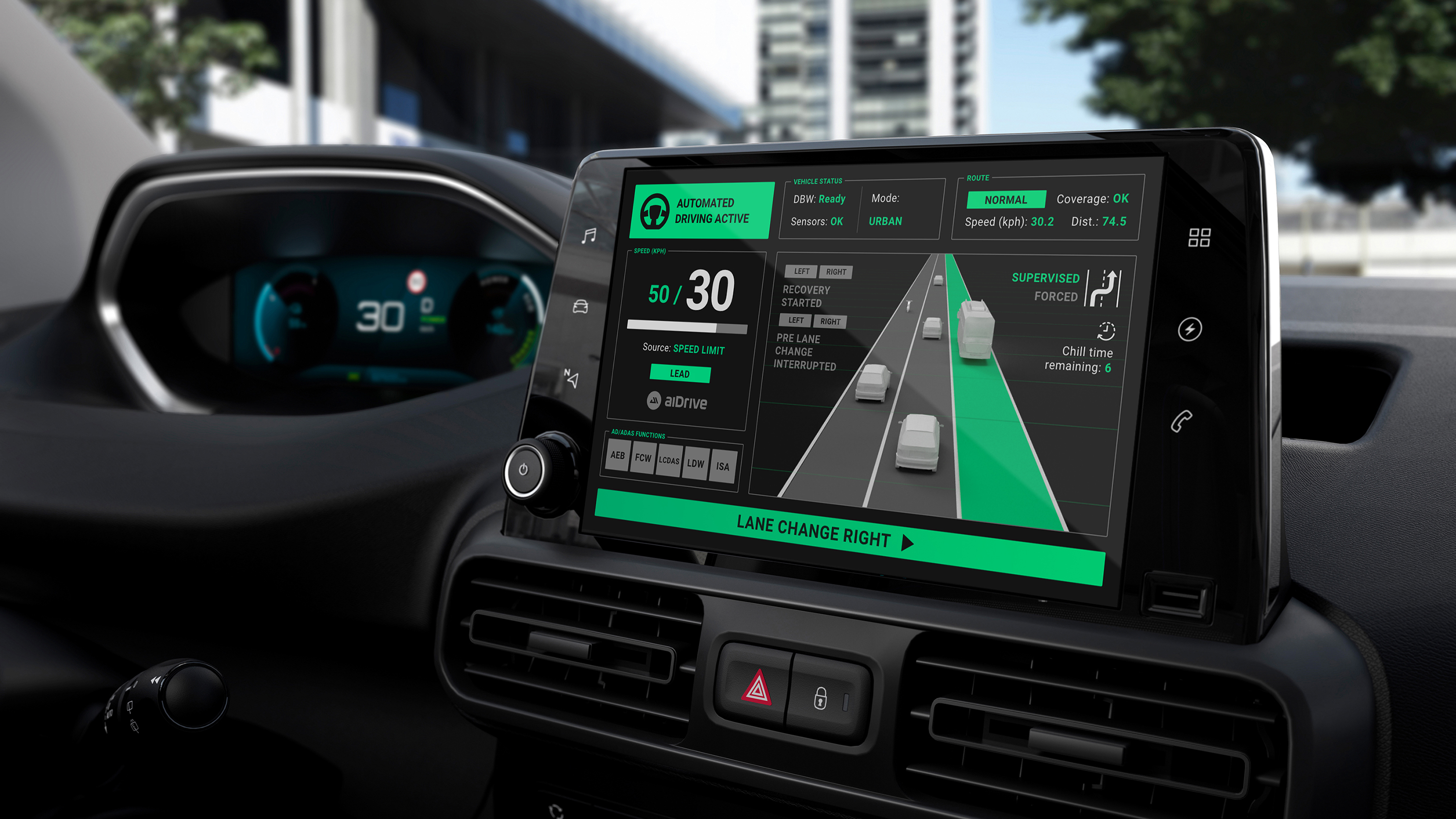
Development in Autonomous Mode – aiMotive in the AV Race
2024. 02. 27.
EVs are much simpler structures than conventional internal combustion engine (ICE) vehicles, so for OEMs, it’s all going to come down to infotainment and driving assistance features to differentiate themselves from the competition. Hungary’s poster child in the automated driving software segment, aiMotive therefore plays a crucial role in serving the market with cutting-edge solutions – now as part of Stellantis. Our inside report sheds light on how all that fits into the global race, why Nvidia’s glory can’t outshine aiMotive, and why passenger cars are still far away from “look-no-hands” mode.
There are three cars in the basement, two of them Toyotas. At first glance, it feels weird since this is the Budapest HQ of aiMotive that, thanks to an estimated acquisition of USD 300 million, is now a Stellantis company that doesn’t have any Japanese brands in its portfolio. The explanation is a rational one: Toyota has the same model for European, American, and Asian markets, which makes worldwide testing a lot easier. aiMotive has a presence in Silicon Valley and Tokyo as well, after all.
Another thing that catches one’s eye is the LiDAR, a sensor that uses laser to measure ranges, on the top of the vehicles. This is a regular feature of an average ADAS (Autonomous Driving Assistance System) robotaxi; yet, aiMotive is known for using simple cameras to detect the environment as it is a more cost-effective solution, and the original idea was to rely on what humans do: normal vision. “The LiDAR serves only validation purposes, so the concept hasn’t changed,” comes the explanation from Head of Engineering Gábor Pongrácz, who takes me on a quick office tour. The cameras are still visible on different parts of the car, yet they have become a lot more discreet.

They’ve Still got That Edge
When entering the ADAS market back in the day, aiMotive’s other edge was that in the R&D phase they started to train with simulated data instead of real-world data which enables testing of scenario corner cases that would be impossible to run in real-life (think of crashes, for instance). This is what the company’s relevant solution, aiSim has got to offer.
Now, in spite of the Stellantis acquisition, which is the all-time record exit in Hungarian startup history, end-to-end simulation remains available for third parties as well. The same applies to aiData, aiMotive’s automated data pipeline, and aiWare, the company’s own neural network-optimized hardware. The latter is very much sought-after, although it is rather Nvidia that captures headlines when it comes to AI-powered chips.

“Nvidia’s strength lies in producing general-purpose chips. This means that the same architecture is offered for cars and, say, servers,” Gábor explains. “That, however, leads to compromises in power efficiency, which either translates to bigger batteries or results in a smaller range.” aiWare, on the other hand, is tailor-made for automotive and functions with exceptional efficiency.
How to Stand out of the EV crowd
Now, aiDrive, the automated driving software is the only solution in the portfolio that is developed exclusively for Stellantis. aiMotive’s engineer team’s job is to supply the OEM’s different brands, from Chrysler to Maserati, with full-stack ADAS software. The latest project is implemented with the help of HIPA: Stellantis spends EUR 55 million to speed up software development.

This is increasingly important not only because of fierce competition but also the changes electrification is bringing about.
Gábor predicts.
Gábor says.
The road to full autonomy is still bumpy, though. Many things must be sorted out to reach mass adoption. Cruise and Waymo might be operating robotaxis in San Francisco already, but even they run into trouble from time to time, crippling intersections for hours.
Keep Your Eyes on the Prize – and the Road (for now)
“We don’t work on L4 systems with elevated autonomy at all, we aim for L2 and L2+ at the moment,” CFO Krisztina Förhécz adds. L2 autonomy stands for the following cocktail: eyes on the road, hands not necessarily on the wheel, automated lane change and motorway exit. Of course, it all has a lot to do with costs as well. Robotaxi fleet operators can afford spending large amounts on equipment to replace human drivers. But for private purposes the bill can go very high very fast – and benefits might disappoint.

Krisztina says. BMW and Mercedes-Benz offer L3 which is good for predetermined motorway sections at a maximum speed of 60 km/h in congested traffic. Price tag? Six thousand euros.
“Stellantis orders developments that the management of its brands’ needs, and of which it assumes will be profitable, and we implement those requests,” she notes. This approach also explains that the emerging Car-as-a-Service (CaaS) trend doesn’t concern aiMotive. It is OEM territory.
The Magic of Good-Ol’ Flesh-and-Blood Interactions
All signs point in the direction that Stellantis is super happy with the aiMotive deal. “They have a lot of requests; they rely on us big time,” Krisztina says. That has a lot to do with the efficiency which is somewhat surprisingly connected with the regular presence of staff. “It has immense advantages that our colleagues are here in person a lot. The exchange of information is just so much smoother. In a fragmented remote work environment, it gets lost,” she adds.

Indeed, the office area is packed with personnel. Your impression is creative chaos: busy people communicating and interacting with each other or hunched over their keyboards. It’s all very vibrant, inspiring and lively – the way a company like aiMotive should be. This is how you switch development into autonomous mode. And this is the kind of development HIPA is pleased to incentivize.